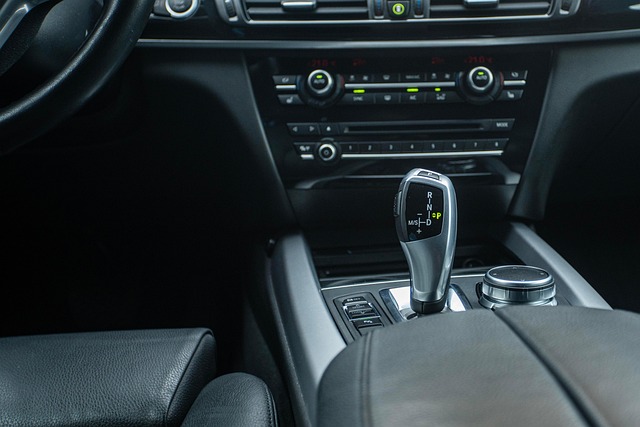# Harnessing AI Technology: Uncovering Its Transformative Effects Across Diverse Sectors and Beyond
Artificial Intelligence (AI) is no longer a futuristic concept; it has become a vital component of various industries, driving innovation and efficiency. One sector that has experienced significant transformation through AI is the automotive industry. From smart manufacturing to autonomous driving innovations, AI is reshaping how vehicles are designed, built, and experienced. In this article, we will explore the key areas where AI is making an impact, featuring insights from industry leaders like Tesla, BMW, and Toyota.
## Smart Manufacturing
The automotive industry is witnessing a revolution in smart manufacturing, thanks to AI technology. By integrating AI into production processes, manufacturers can optimize operations, reduce waste, and enhance quality control.
– **Predictive Analytics**: AI algorithms analyze data from machinery to predict failures before they occur. This proactive approach minimizes downtime and ensures smoother production.
– **Robotics and Automation**: AI-powered robots are increasingly used on assembly lines, performing tasks with precision and speed. This not only improves productivity but also enhances worker safety by taking over hazardous tasks.
**Example**: BMW has implemented AI in its manufacturing plants to streamline processes and enhance efficiency. By utilizing AI-driven robots, BMW has improved its production capabilities while maintaining high standards of quality.
## Predictive Maintenance in Vehicles
One of the most promising applications of AI in the automotive industry is predictive maintenance. This technology allows manufacturers and service providers to anticipate vehicle issues before they escalate, thereby enhancing safety and reducing repair costs.
– **Data Collection**: AI systems collect and analyze data from various sensors embedded in vehicles. This data helps identify patterns that may indicate potential malfunctions.
– **Real-Time Monitoring**: With AI, vehicles can monitor their own health in real-time, alerting drivers to potential issues before they become serious problems.
**Example**: Toyota has embraced predictive maintenance by utilizing AI to monitor the health of its vehicles. By analyzing data from connected cars, Toyota can provide timely alerts to drivers, ensuring that their vehicles remain in optimal condition.
## Autonomous Driving Innovations
The quest for fully autonomous vehicles has been one of the most exciting developments in the automotive industry. AI plays a crucial role in enabling cars to navigate safely and efficiently without human intervention.
– **Machine Learning**: AI algorithms learn from vast amounts of driving data, improving their ability to make decisions in complex environments.
– **Sensor Fusion**: AI systems integrate data from various sensors, such as cameras, LiDAR, and radar, to create a comprehensive view of the vehicle’s surroundings.
**Example**: Tesla is at the forefront of autonomous driving innovations, employing AI to power its Autopilot feature. Through continuous software updates, Tesla vehicles are becoming increasingly capable of navigating diverse driving conditions with minimal human input.
## Supply Chain Optimization
AI is also transforming supply chain management in the automotive industry. By leveraging AI technology, companies can streamline operations, reduce costs, and enhance customer satisfaction.
– **Demand Forecasting**: AI algorithms analyze market trends and consumer behavior to predict demand more accurately, allowing manufacturers to adjust production accordingly.
– **Inventory Management**: AI systems optimize inventory levels by predicting when parts will be needed, reducing excess inventory and associated costs.
**Example**: Ford has implemented AI in its supply chain to improve efficiency and reduce lead times. By utilizing predictive analytics, Ford can better align production schedules with market demand, ensuring timely delivery of vehicles to customers.
## Intelligent User Experiences
As vehicles become more connected, AI is enhancing user experiences through personalized features and services. This not only improves driver satisfaction but also increases vehicle safety.
– **Voice Recognition**: AI-powered voice assistants allow drivers to control various vehicle functions hands-free, minimizing distractions.
– **Personalization**: AI systems learn driver preferences over time, adjusting settings such as climate control, seat position, and entertainment options to enhance comfort.
**Example**: BMW’s iDrive system utilizes AI to provide a seamless user experience. By learning from driver behavior, the system can anticipate needs and make recommendations, creating a more intuitive driving experience.
## Conclusion: The Future of AI in the Automotive Industry
The integration of AI in the automotive industry is just beginning, and its potential is immense. As technology continues to evolve, we can expect further advancements in smart car technology, autonomous driving innovations, and predictive maintenance in vehicles. The future promises a new era of transportation that prioritizes safety, efficiency, and user satisfaction.
In summary, AI is reshaping the automotive landscape through:
– Smart manufacturing processes that enhance efficiency and quality.
– Predictive maintenance systems that ensure vehicle reliability.
– Autonomous driving technologies that redefine mobility.
– Supply chain optimizations that streamline operations.
– Intelligent user experiences that personalize driving.
As companies like Tesla, BMW, and Toyota continue to innovate, the automotive industry is poised for a transformative journey powered by AI technology. Stay tuned as we witness the future of driving unfold before our eyes.











